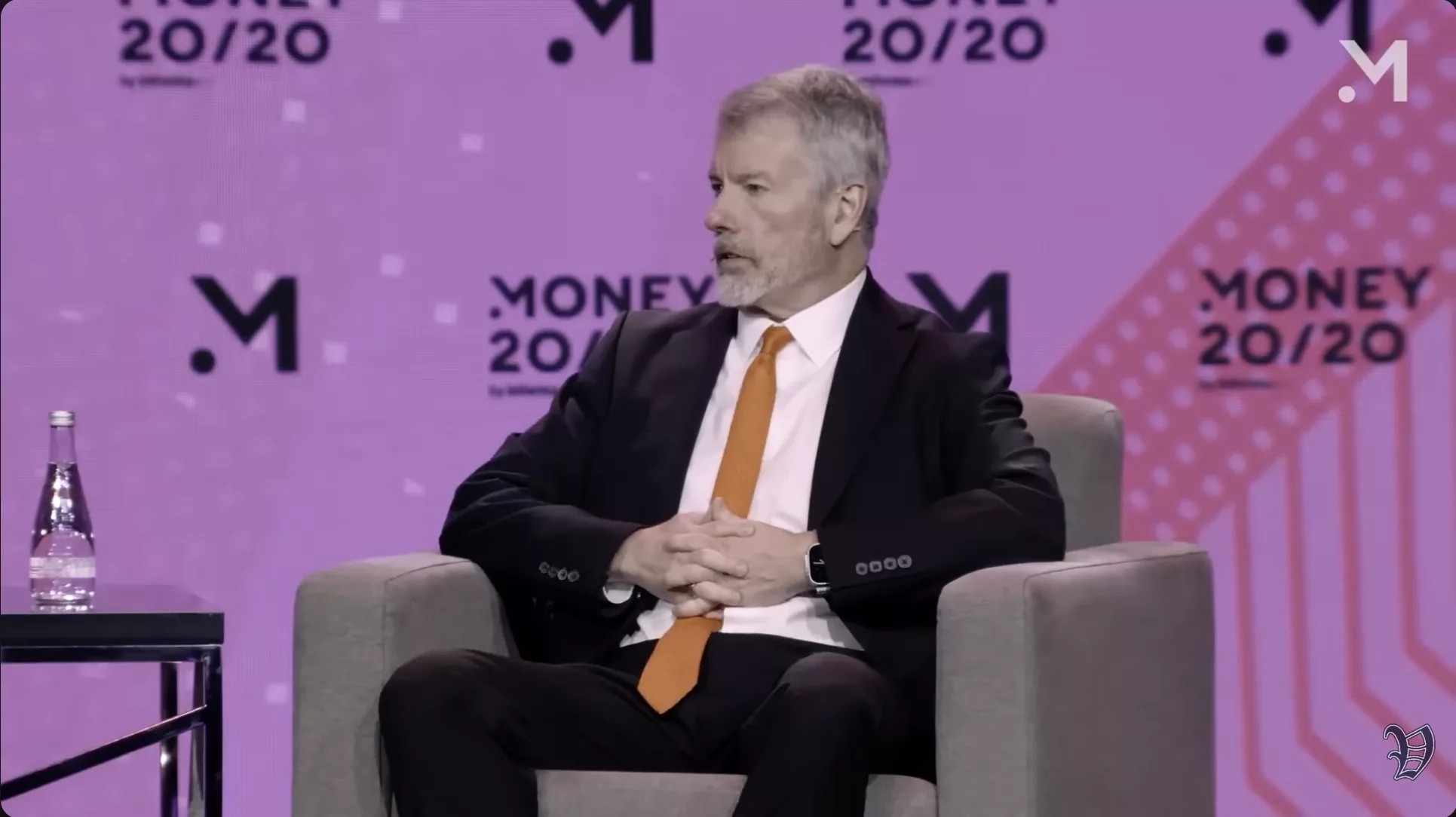Michael Saylor drops wild new Bitcoin insights at Money 20/20
Michael Saylor has outlined a future where Bitcoin powers the most efficient credit instruments in financial history.
- Michael Saylor, Executive Chairman of Strategy, described Bitcoin as “digital capital” and the foundation for scalable fixed-income instruments.
- Saylor noted major banks like JPMorgan and Wells Fargo are beginning to accept crypto collateral.
- He predicted that banking adoption could 10x the crypto industry over the next four years.
- Saylor predicts Bitcoin could hit $10 million as the sector becomes fully integrated into global finance.
In a recent Money 20/20 interview, Bitcoin magnate Michael Saylor sat down with Scott Melker, host of The Wolf of All Streets, to discuss how digital credit instruments are redefining corporate finance. The conversation, which has drawn attention across the crypto community, saw Saylor unveil insights that could reshape how institutions and investors perceive Bitcoin, credit markets, and fixed-income investing.
Saylor opened his speech by framing Bitcoin (BTC) as the foundation of “digital capital,” a modern store of value akin to digital gold. He contrasted this with “digital finance,” referring to the tokenization of real-world assets like bonds and currencies. Per Saylor, Bitcoin’s regulatory clarity, particularly after ETF approvals and pro-crypto U.S. policy shifts, has unlocked new use cases beyond just holding, especially in fixed-income instruments.

Talking about institutional adoption, he praised actions by JPMorgan, Bank of America, Wells Fargo, BNY Mellon, PNC, Schwab, and boutique banks like Texas Capital for revising restrictive crypto policies. JPMorgan’s recent acceptance of Bitcoin and Ethereum (ETH) as collateral exemplifies this shift.
Saylor credited the Trump administration’s pro-crypto stance, including Treasury Secretary Scott Bessent’s regulatory clarity, for accelerating banking sector participation. The Bitcoin supporter predicted this banking adoption could 10x the industry’s growth over four years.
Michael Saylor’s vision for Strategy
Central to his presentation was Strategy’s new digital credit stack: $STRK, $STRF, $STRD, and $STRC. These instruments, backed by Bitcoin, deliver yields between 8% and 12.5% which is higher than what traditional bonds and money markets offer. Saylor claimed these offerings are 2–4x more efficient than legacy fixed-income products.
Saylor further argued that Strategy is positioning itself as the world’s most scalable, tax-efficient fixed-income generator. With BTC expected to grow 20–30% annually, Strategy can afford high-yield dividends without draining capital. The company’s approach inverts traditional finance using equity to fund dividends while holding appreciating assets, something he said legacy finance simply can not match.
Saylor envisions scaling Strategy to $2–3 trillion in assets by buying hundreds of billIons in BTC, a move that could place it above other firms. The Bitcoin mogul ended his conversation by predicting Bitcoin may reach $10 million within the next decade as adoption increases. The latest interview comes just after the company acquired an additional 390 Bitcoin worth nearly $44 million, bringing the company’s total to 640,808 BTC.
You May Also Like

Chinese Man Arrested in Bangkok Over Alleged $14M Crypto Ponzi Scheme

Pavel's humanity, and Ton's challenges
